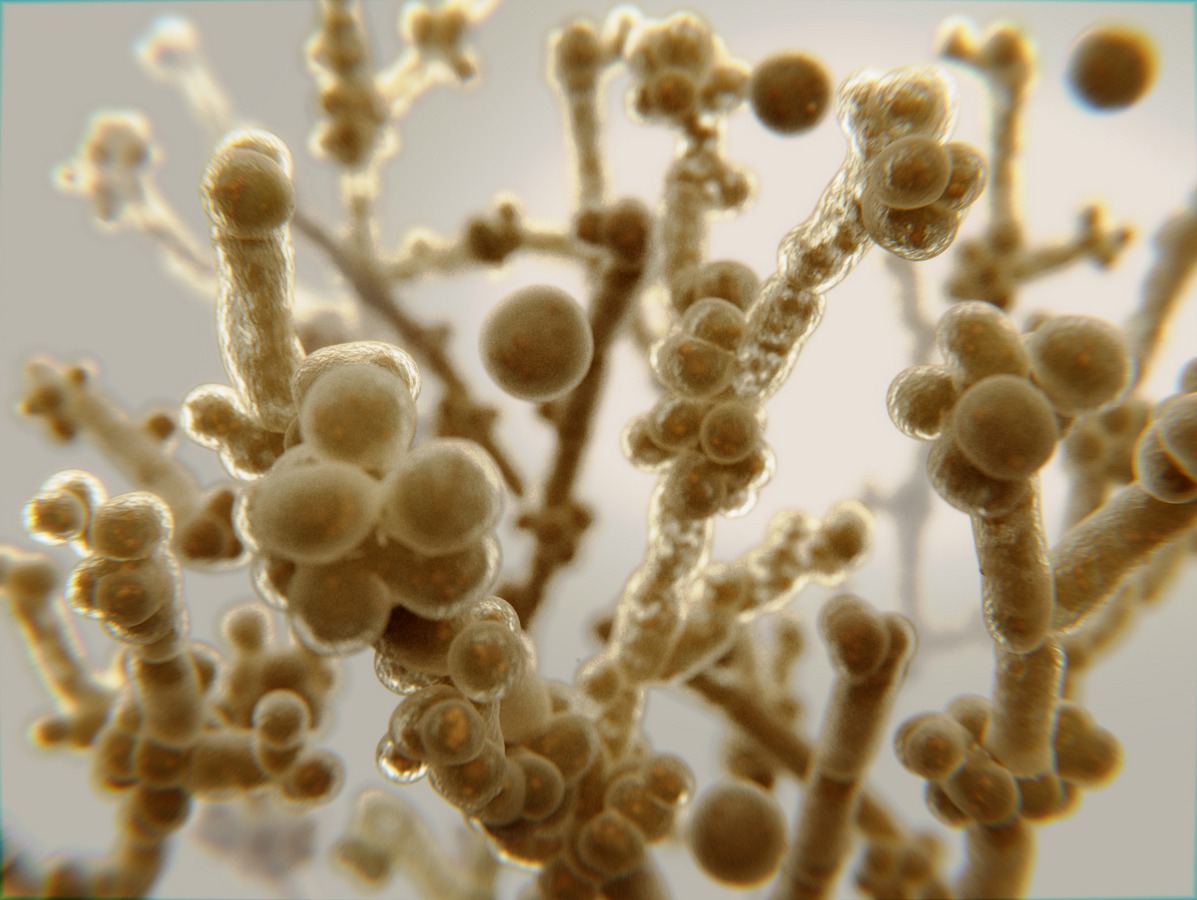The yeast Candida, the most common strain of which is Candida albicans, is a normal part of your microbiome and is found in your gut, skin, throat, mouth, and genital tract and it usually does not cause any issues.
The problem arises when Candida takes over in the body and begins to overgrow.
This causes a yeast infection called candidiasis.
In this article, we will focus on controlling the overgrowth of Candida in the intestines.

What symptoms indicate yeast overgrowth in the intestines?
The first thing you notice is a change in your stool.
In gastrointestinal candidiasis, white, yellow or brown mucus, filamentous aggregations, or foam are present in the faeces. The stool can also be very liquid.
In addition, you may experience symptoms such as headache, weakness and fatigue, severe flatulence and abdominal pain, an excruciating craving for sweets, and itchy skin all over the body.
What promotes the development of candidiasis?
Normally, a healthy person’s immune system and balanced gut microbiome are able to inhibit the development of candidiasis.
If, for whatever reason, the defences of these two are weakened, Candida can begin to overgrow.
There are three main reasons behind the development of gastrointestinal candidiasis:
1. Underlying diseases
Research has shown that people with previous serious issues with gut health and diseases are more susceptible to yeast overgrowth.
Conditions contributing to candidiasis are:
- IBS (inflammatory bowel disease);
- ulcerative colitis;
- Crohn’s disease.
It is believed that the inflammatory environment caused by these conditions in the intestines leads to Candida overgrowth, and in turn, to further inflammations and problems.
Diabetes is another disease that contributes to the development of candidiasis, because constantly excessive blood sugar levels create a favourable environment for yeast overgrowth.
2. Medications
Various medications also create favourable conditions for candidiasis. These include:
- Antibiotics, especially broad-spectrum, which, along with bad bacteria, also kill the good.
Those good bacteria that previously foughtCandida will die, allowing pathogenic bacteria and yeast to thrive; - Steroids. Their use affects the immune system, suppresses its natural defences, and increases the risk of infection in the body;
- Immunosuppressive drugs, i.e. drugs that suppress the immune system. They affect cells of the immune system and thereby reduce its normal efficiency;
- Drugs that work on the principle of a proton pump inhibitor, for example, those used to treat reflux.
Reducing the acid level in the body creates a more favourable living environment for bacteria and yeast, enabling them to overgrow.
3. Wrong diet
Candida loves sugar, especially regular white sugar. Therefore, it is important that blood sugar levels and the amount of sweets consumed are kept under control.
If the gut microbiome is already out of balance, there is chronic inflammation in the body, and most of your diet consists of overly processed food, it creates the “perfect storm” for candidiasis.
What can you do to prevent candidiasis?
Although the development of candidiasis is greatly influenced by underlying diseases, there is still quite a bit that you can do yourself:
- take antibiotics only when it is absolutely necessary. Excessive antibiotic intake also destroys good bacteria in your gut that help to control yeast;
- choose whole grain-rich and balanced foods and don’t overdo it with sugar and alcohol. Yeast loves the latter and they give it a lot of strength to grow;
- take probiotics in early spring and autumn. Probiotics help to stabilise the composition of gut bacteria and add essential good bacteria to the digestive tract. You can find high-quality probiotics from Elsavie by clicking on this link;
- Eat naturally fermented foods like sauerkraut, pickles, and kimchi every day and drink unflavoured yogurt, kefir, and buttermilk. All of these will help to add the good live lactic acid bacteria you need in your gut;
- Avoid or quit smoking, as smoking weakens your immune system and thus gives yeast the opportunity to develop.
How can one treat gastrointestinal candidiasis?
If you suspect that you have candidiasis, contact your family physician for a diagnosis and further examinations.
For diagnosis, you have to give a stool sample which will be tested for fungal cultures.
If the diagnosis is established, the doctor can prescribe antifungal medicines against Candida but it is important to inform the doctor about all the medicines that you are currently taking, because some of them may facilitate the persistence of candidiasis.
If your doctor is familiar with all the medicines, they can take them into account when putting together a treatment plan.
What can you do?
Earlier, we recommended foods that support good gut bacteria. In addition, we highlight four foods that have a potentially inhibitory effect on yeast:
- Garlic
Garlic contains allicin and this study revealed that it helps to reduce Candida overgrowth; - Coconut oil
Coconut oil contains lauric acid, which fights Candida; - Curcumin
Curcumin is one of the main ingredients of turmeric and it helps to reduce the abundance of Candida; - Xylitol
Xylitol reduces the ability of Candida to adhere to surfaces and thereby reduces the inflammatory effect.
Extra tip: consume enough fibre every day
An unbalanced gut microbiome creates a favourable environment for candidiasis.
In order for good bacteria to thrive in your gut, you need to feed them enough every day. Otherwise, they will die and the bacteria that cause inflammation take over, enabling conditions such as candidiasis to rear their ugly heads.
The favourite food of the bacteria that support your well-being is fibre, and you can only get fibre from plant-based foods. Therefore, it is important to keep your diet varied and eat plenty of plants.
How to increase this?
Click on this link and start, for example, with our inspiring challenge.
If you feel like you don’t want to make any major changes to your diet right away, start with Elsavie’s fibre supplements. This way you can quickly and conveniently ensure your daily fibre intake and allow good stomach bacteria to take care of you.
